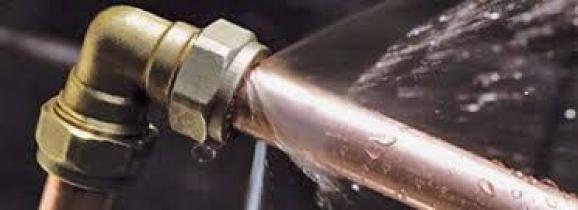Learn About Main Origins Behind Water Leakage in Your Home
Learn About Main Origins Behind Water Leakage in Your Home
Blog Article
The publisher is making a number of great points relating to How to detect water leaks in your home as a whole in this article following next.

Leaks not just trigger waste of water but can also create unneeded damages to your residence and also advertise undesirable natural development. Water leaks might go unnoticed because many of the pipework in our home is hidden. By looking as well as recognizing for daily situations that cause leaks, you can secure your residence from future leaks and unneeded damages. Today, we will certainly check out six leak triggers that may be triggering your pipelines to drip.
Encroaching roots
The majority of water leakages begin outside the residence rather than inside it. You could observe damp patches or sinkholes in your yard, and that could mean that tree roots are getting into water lines causing water to leak out.
Corroded water systems
As time goes by, your plumbing system ages and also rust such as corrosion might begin gnawing the pipes. This could be the cause of staining or bending on your water pipes. This calls for an inspection with your plumber quickly. If our plumbing system is old, consider changing the pipelines given that they go to a higher risk of rust than the newer models.
Faulty Pipeline Joints
The point at which your pipes connect is regularly the weakest link in the waterline. Pipeline joints can wear away over time, causing water leakages. However, most of pipeline joints are not easily noticeable. If you have noisy pipelines that make ticking or banging noises, especially when the hot water is turned on, your pipeline joints are possibly under a great deal of pressure. It is a good idea to have your plumber examine your system yearly.
Instantaneous temperature changes.
Severe temperature level changes in our pipelines can trigger them to expand and also contract unexpectedly. This development as well as contraction might create cracks in the pipelines, especially if the temperature level are below freezing. It would be best if you kept an eye on how your plumbing functions. The presence of the previously pointed out conditions frequently suggests a high threat.
Poor Water Connectors
At times, a leak can be caused by loose hoses and pipelines that provide your appliances. Most of the time, moving is what triggers the loose water Connections. You may discover when it comes to a cleaning machine, a tube might spring a leakage because of shaking during the spin cycle. In case of a water links leakage, you may observe water running straight from the supply line or puddles around your devices.
Clogged Drains
Clogged drains could be frustrating and inconveniencing, but they can often wind up triggering an overflow leading to burst pipelines. Keep removing any kind of products that might drop your drains that can block them to stay clear of such inconveniences.
All the above are causes of leakages yet not all water leaks arise from plumbing leakages; some leakages could come from roofing system leakages. All leaks need to be fixed promptly to prevent water damage.
Leakages not only create waste of water however can additionally trigger unnecessary damage to your residence as well as advertise undesirable natural growth. By looking and comprehending for everyday scenarios that cause leaks, you can protect your residence from future leaks and also unnecessary damages. Today, we will look at six leak triggers that may be causing your pipelines to drip.
At times, a leak can be caused by loosened pipes and also pipes that provide your appliances. In situation of a water connections leak, you may observe water running straight from the supply line or pools around your appliances.
How To Check For Water Leak In Your Home
How To Check for Leaks
The average household's leaks can account for nearly 10,000 gallons of water wasted every year and ten percent of homes have leaks that waste 90 gallons or more per day. Common types of leaks found in the home are worn toilet flappers, dripping faucets, and other leaking valves. These types of leaks are often easy to fix, requiring only a few tools and hardware that can pay for themselves in water savings. Fixing easily corrected household water leaks can save homeowners about 10 percent on their water bills.
To check for leaks in your home, you first need to determine whether you're wasting water and then identify the source of the leak. Here are some tips for finding leaks:
Take a look at your water usage during a colder month, such as January or February. If a family of four exceeds 12,000 gallons per month, there are serious leaks.
Check your water meter before and after a two-hour period when no water is being used. If the meter changes at all, you probably have a leak.
Identify toilet leaks by placing a drop of food coloring in the toilet tank. If any color shows up in the bowl after 10 minutes, you have a leak. (Be sure to flush immediately after the experiment to avoid staining the tank.)
Examine faucet gaskets and pipe fittings for any water on the outside of the pipe to check for surface leaks.
Undetected water leaks can happen without the home or business owner even realizing. If you suspect a water leak, but not able to find the source. It is time to contact a professional water leak detection service, The Leak Doctor.
How To Find a Water Leak In Your Home
https://www.leakdoctor.com/blog/How-To-Check-For-Water-Leak-In-Your-Home_AE197.html

We were brought to that report about How to Find Water Leaks through a friend on another site. So long as you liked our blog posting plz do not forget to share it. Thank-you for taking the time to read it.
Click Report this page